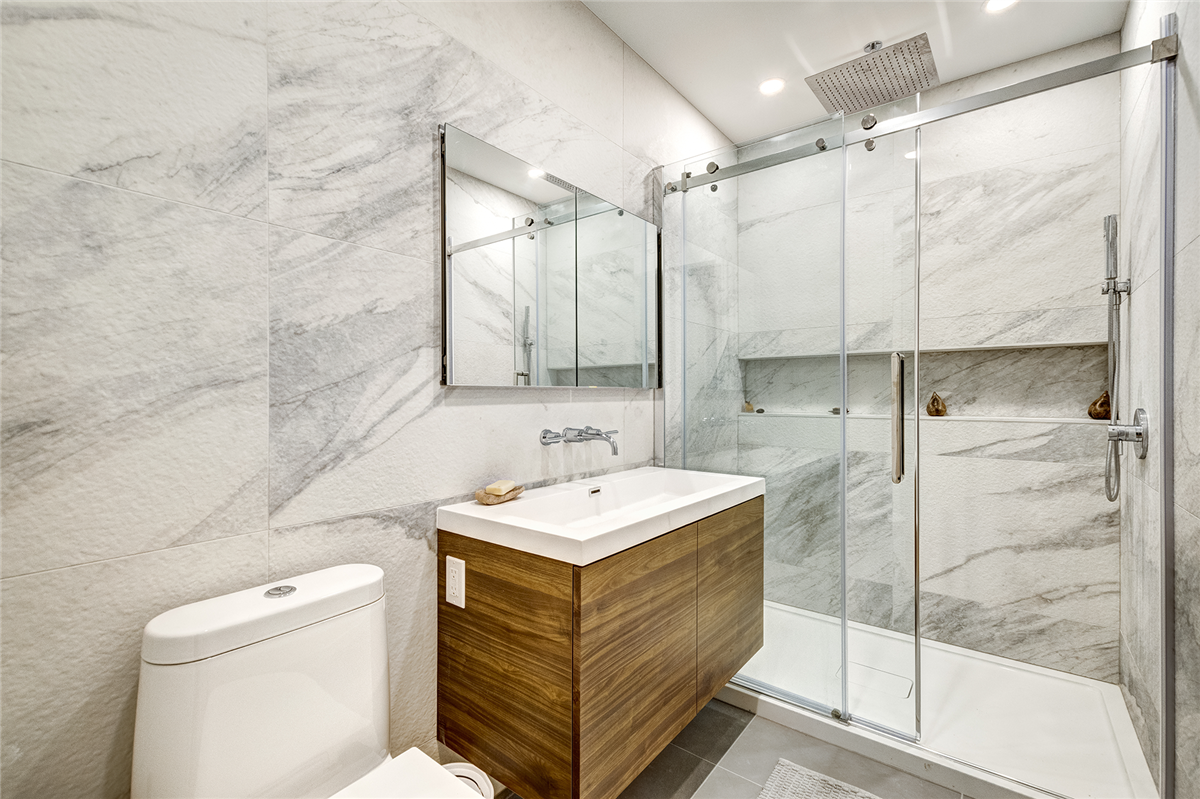What It Is and Why It's Here
We've officially entered the time of year when there is a significant increase in the number of questions regarding window condensation, so we thought it would be helpful for our customers to understand both condensation's sources and its remedies. In order to understand why condensation is forming on your glass and what can be done about it, it is important to answer this question: How does it form in the first place?
The Answer: When warm, moist air comes into contact with a cooler surface, the excess moisture collects on that surface in the form of droplets, because cooler air cannot hold as much moisture as warmer air. Condensation is a very natural and common event that can occur any time of year, but we see it on windows most frequently during spring and fall when warm days follow cool nights.
Exterior Condensation
Exterior condensation occurs because the exterior glass surface temperature on your residential windows is below the dew point in the air. Dew point is the temperature at which water vapor in the air condenses. We see this condensation because overnight the temperature drops, lowering the temperature of the exterior lite of glass. By morning, the air initially heats up faster than the glass temperature. If the air has enough moisture in it, the prime conditions exist for condensation to form. We see this condensation even more frequently on high-performance glazing's that have Low-E with Argon Gas, because those glazing's do a superior job restricting heat transfer through the glasses. It is this restriction which helps keep the inside of your home warmer even as the temperature outside continues to drop, saving you heating dollars in the winter.
Interior Condensation
Interior condensation forms for all the same reasons exterior condensation does, however elevated levels of interior condensation indicate a potential moisture problem inside the home. In new homes, the problem generally corrects itself once the building materials' excess water has evaporated, which could take a number of months. In an existing residence however, excessive and unaddressed moisture issues can lead to peeling paint, damaged insulation, mold and other related health hazards.
Implications for Homeowners
It is very important to keep in mind that condensation is not a sign of product malfunction. As we've learned above, condensation forming on a glass surface is an indication that there's moisture in the air. While this phenomena has always existed, it's a relatively new experience for homeowners because today's windows are much more energy efficient compared to the residential windows of even a few years ago. Today's models do a much better job of restricting airflow through a home and reflecting heat back to its source, which is great because it saves you money on heating and cooling. The downside, however, is that we sometimes have to take some steps to address the excess moisture that may exist in our home which previously would have escaped through our old, drafty windows.
If you have exterior condensation on your residential windows, there's no need to be too concerned. The windows are trapping the relatively warmer air inside of your home and keeping the colder air out -- which is a good thing. While it may be a bit of a nuisance, until you can control the outside temperature and humidity levels, there's nothing you'll be able to do to change it. If you are seeing interior condensation, that should be addressed. The use of dehumidifiers, increased ventilation, increased air circulation, and behavioral changes can all help reduce the amount of moisture in your home which will make it safer and more comfortable.
If you have any questions about condensation, please feel free to reach out to a member of our staff and we'll be happy to help!
Subscribe to ProEdge Remodeling's Blog









